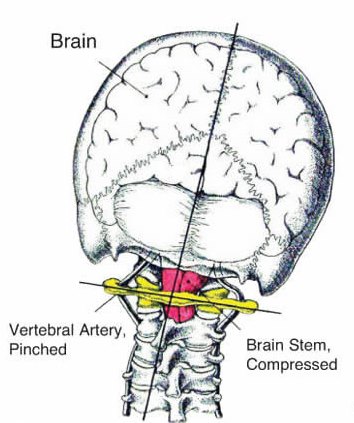The Primary Reasons Why 90% of People Are In Pain…And How To Fix It
By Guest Blogger Dr. Chad McIntyre
Pain is an aggravating and draining experience, affecting our jobs, personal lives, and general quality of life. It is also increasingly prevalent; 50% of the population suffers from a headache-related condition; 30% suffers from neck pain, with over half likely to experience recurring episodes; low back pain is the second most common cause of disability in the United States (neck pain is fourth).
Perhaps the most frustrating things about being in pain are the ineffectiveness of commonly prescribed treatments and not understanding the cause, with conflicting and numerous opinions making it all seem so complicated.
Well, what if it was really not that complicated? What if a big part of the explanation was as simple as, “You are showing signs of physical breakdown because the foundation of your body has shifted, forcing every bone and muscle in your structural frame to compensate”? Could it possibly be that simple?
That it is absolutely possible for it to be that simple is one of the best kept secrets in healthcare.
You see, your body is not unlike your home in that its foundation has to be level in order for it to maintain its structural integrity. If your home’s foundation shifts, then at some point – be it months or years later – noticeable adverse reactions will develop; the same thing happens in the body, but a quick review of Anatomy 101 reminds us that the body is structurally designed from the top down, not the ground up like in a home.

While developing in-utero, the first bones that form are the skull and the upper cervical vertebrae in the neck to protect the two most important parts of your body: the brain and the brainstem; such is the foundation upon which the rest of your anatomy is built. After development is completed, the balance of the head and neck becomes crucial to your body’s ability to maintain and sustain itself physically, to recover from the stress of day-to-day life, to heal following vigorous activity, etc.
Unfortunately, nine out of ten people have lost their foundational stability, most frequently on account of head and neck injuries from birth to the late teenage years, when trauma is far more common and the body is still developing. That header off the top bunk, tumble down the steps, fall off the bike or backyard tree, teenage sports injury or auto accident – one or more of these things happen to everyone – can actually become very clinically relevant.
When your head and upper neck are taken out of their normal state of alignment due to injury, a chain reaction occurs that prompts your bones and muscles from head to toe into an adapted physical state. This shifting causes muscles that run along the left and right sides of your body, as well as the muscles positioned in the front and the back, to pull against one another instead of working in tandem; persistent muscle strain on the head, neck, shoulders, back, and hips can cause pain in various areas of your body as early in life as youth.
Uncorrected body imbalance creates on-going structural stress and has a very negative long term effect. Though incredibly resilient by nature and capable of reorganizing well enough during the early phase of foundational adaptation to avoid much more than minimal warning signs like pain or other symptoms, your body will break down if the head and upper neck alignment is never restored. Just as driving your car with the front end out of alignment causes premature tire wear, long-term body imbalance causes your body to age faster.
Logical as all of the above may be, that you may never have been made aware of it before speaks to the primary flaw in our health system; we have collectively become so enamored with symptom management that a basic, extremely common cause of pain goes chronically overlooked. We all experience trauma and, thus, are all susceptible to foundational misalignment, but when head/neck balance is restored, immediately your body can begin to re-adapt, your innate self-healing process can more effectively resume, pain can start reducing, and the degenerative process can be curbed. It really can be that simple.
Want to see more blogs like this and get notifications on local events and happenings? Subscribe to our free weekly newsletters here.
